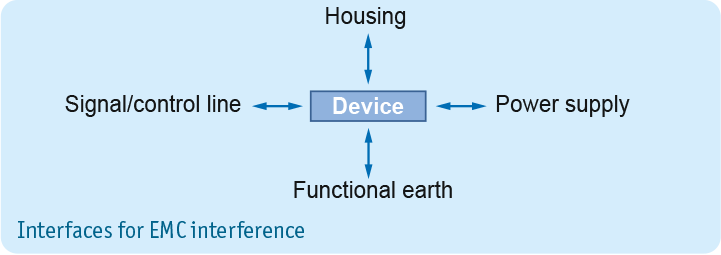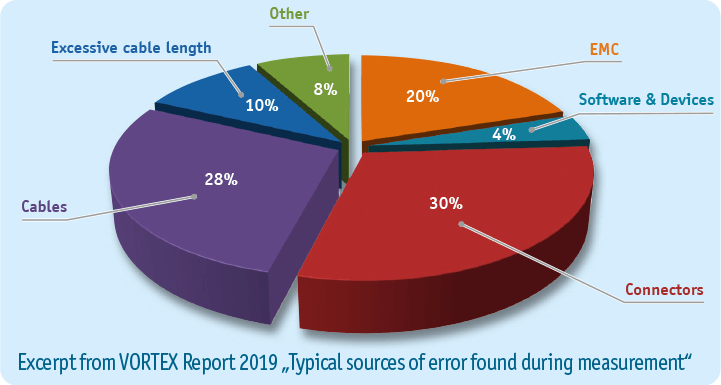Typical sources of EMC interference
in industry and automation


Bus modules are generally designed and built to withstand all types of external electromagnetic interference. Certificates by EMC laboratories (EMC = electromagnetic compatibility) are the basis for any product certification.

Regardless of all the testing, sporadic failures of bus systems occur again and again for no obvious reason. Replacements at the visible fault locations (red error LED) might restore the apparent functionality of the system. However, over the last 10 years, suppliers and operators of fieldbus systems have come to realise that, in most cases, the visible fault location ”red error LED“ has nothing to do with the real cause of the problem. The conclusions drawn from this insight – often after a protracted process accompanied by painful losses and failures – can be summed up by ”troubleshooting by using diagnostic and service tools“ or ”permanent network monitoring in the sense of condition monitoring“.
Measurements have confirmed that approx. 40% of bus failures are caused by physical transfer quality issues. In addition to installation errors (becoming less frequent nowadays) such failures are obvious consequences of the production environment. Oxidation and corrosion caused by humidity or aggressive media within the contact points, line rupture caused by excessive alternate bending, or simply ageing of components could be identified by measurements as causes of sporadic failures.

Currently, a new phenomenon has appeared during the search for causes of bus failures. It has been noted that data communication issues are becoming more frequent in situations where the system itself does not reveal any weak points.
It was the investigation of shield currents on industrial data communication lines that prompted the diagnostic approach to take a completely new turn. It soon became clear that the bus itself was in perfect condition but was being affected by external influences that are generally referred to as ”EMC interference“. Further, extensive measurements, both in the PE/PA system and in the shielding connections of bus lines, revealed an association between high leakage currents (mostly of higher frequency) and bus failures.
The following facts and circumstances are presented for explanation and better understanding of the above statements:
New systems are increasingly installed into older or existing buildings. Experience has shown that system suppliers rely on the specifications provided by the operator, or take a functioning equipotential bonding for granted. They neglect to verify or certify the function or resilience of the existing PA.
Do you have any questions or would you like advice from our experts? Simply send us your enquiry - conveniently online.